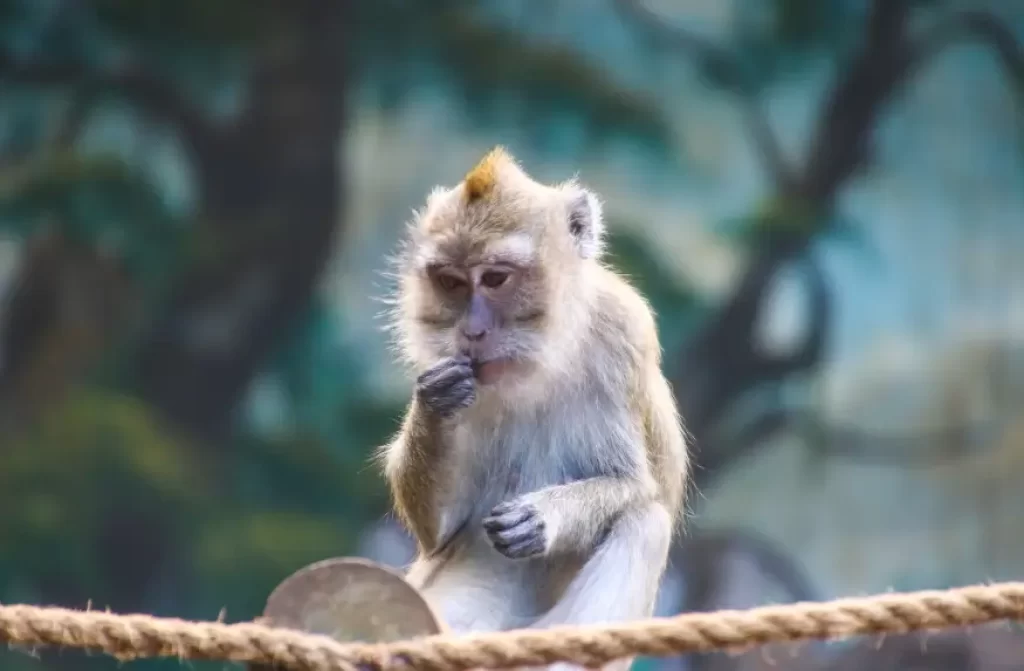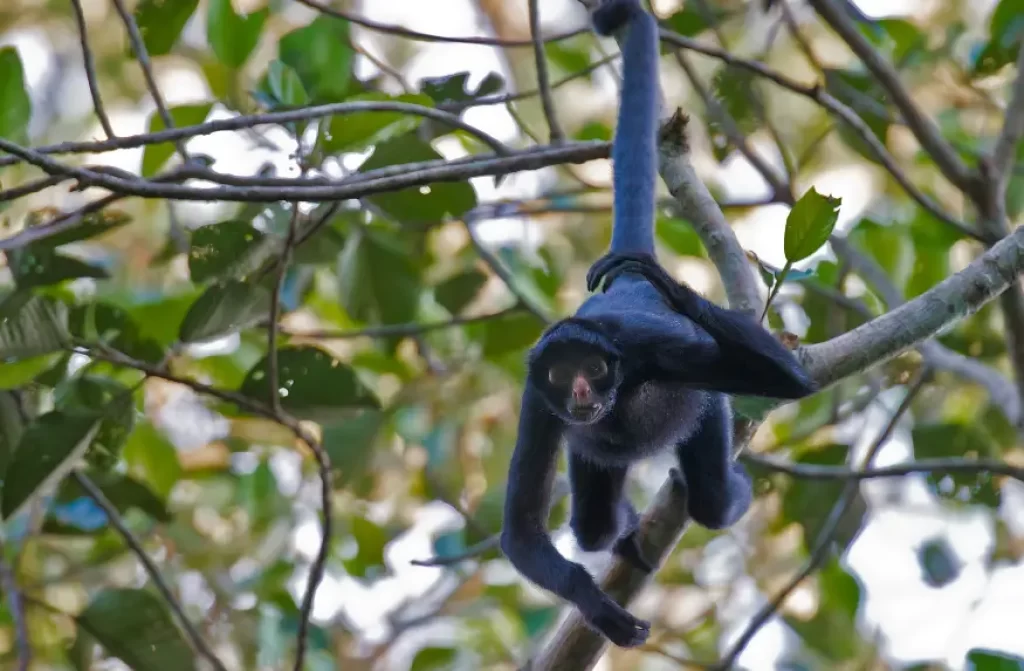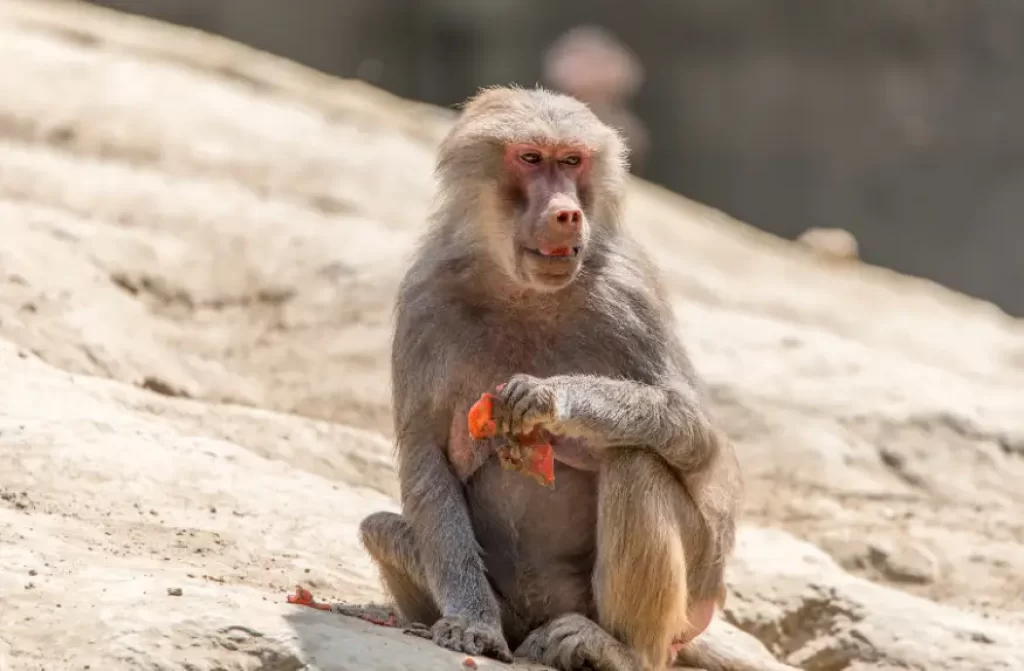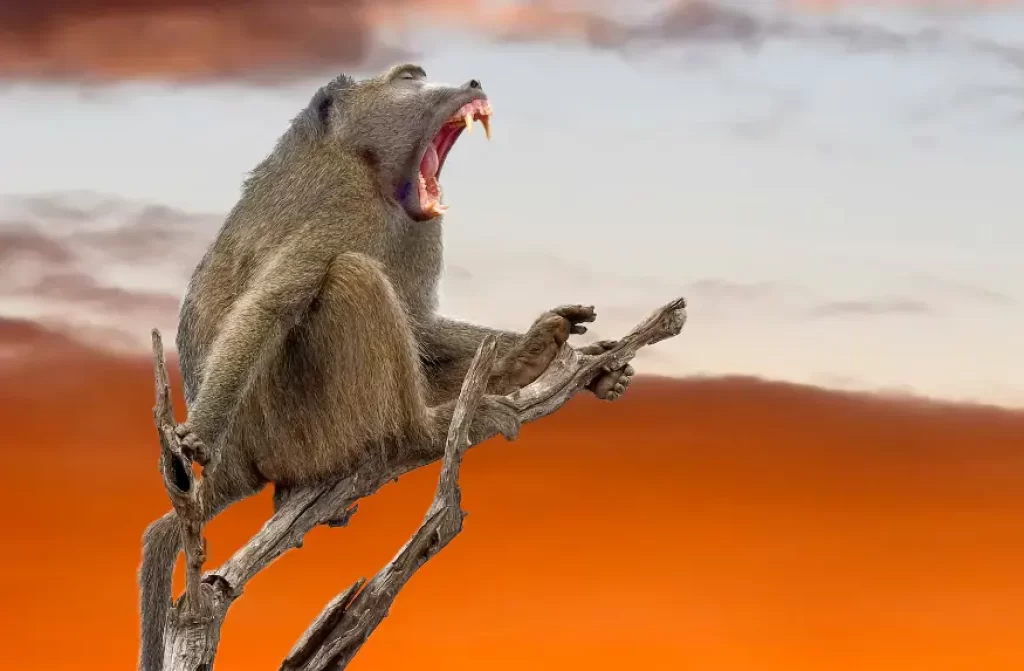Monkeys are amongst the most widespread and diverse group of mammals on the planet, with over 260 different species existing today. They are characterized by their dexterous hands, forward-facing eyes, and highly flexible limbs.
However, one aspect of monkeys that is not always fully understood is their distribution and habitat in the wild.
Monkeys inhabit a diverse range of ecosystems and locations, from the dense rainforests of South America to the rugged mountains of Asia.
Distribution of Monkeys

Monkeys are divided into two primary groups, Old World monkeys and New World monkeys, depending on their geographical distribution and physical characteristics.
Old World Monkeys
Old World monkeys, as the name suggests, are native to Africa and Asia. They include species like baboons, macaques, mandrills, and colobus monkeys.
Africa is home to a wide array of monkey species, with habitats ranging from the lush, tropical rainforests of Central Africa to the arid deserts of North Africa and the savannahs in between.

For instance, the Vervet monkey inhabits the savannahs of Eastern Africa while the Mandrill, the world’s largest monkey species, lives in the rainforests of Western Central Africa.
In Asia, monkeys can be found in a wide variety of habitats. Macaques, for example, have a vast geographical range, extending from Japan to Afghanistan. They can be found in various environments, including mountains, forests, and even urban areas.
New World Monkeys

New World monkeys are native to Central and South America and include species like spider monkeys, howler monkeys, and capuchins.
In Central America, species such as the Geoffroy’s spider monkey inhabit the rainforests from Southern Mexico to Panama.
In South America, one of the most biodiverse continents on the planet, monkeys live in various habitats, from the dense Amazon rainforest to the high-altitude cloud forests in the Andes. The howler monkeys, for instance, are found throughout the forests of South America, from Argentina to Brazil.
Adaptations to Habitat

Monkeys have adapted to their respective habitats in impressive ways. For instance, many New World monkeys, like the spider monkey, have evolved prehensile tails.
These act like fifth limbs, allowing the monkeys to skillfully navigate the dense, layered canopies of the rainforests.
Old World monkeys, such as the baboons, have a different set of adaptations. Many species are terrestrial and have developed larger, more muscular bodies to survive on the ground in open habitats like grasslands.
Human Impact and Conservation
Regrettably, many monkey species are under threat due to habitat destruction, primarily from deforestation and the expansion of human settlements and agriculture. Illegal pet trade and hunting for bushmeat also contribute to their decline.
Conservation efforts are in place worldwide, aiming to protect these intelligent and fascinating animals and their habitats.
International and local laws, along with protected areas and breeding programs, are a few strategies employed to conserve monkey populations. These programs aim to protect habitats, enforce laws, and educate the public about the importance of these animals and the threats they face.
In conclusion, monkeys inhabit a wide range of habitats, from the dense rainforests of South America to the high mountain ranges of Asia and the savannahs of Africa. Their distribution and way of life are as diverse as the species themselves. Understanding where monkeys live in the wild helps us appreciate their adaptability and resilience, and underscores the importance of conserving their habitats.
FAQ

What are Old World monkeys?
Old World monkeys are a diverse group of primates native to Africa and Asia. They belong to the family Cercopithecidae and are grouped into two subfamilies: Cercopithecinae and Colobinae. This group includes familiar species such as baboons, macaques, vervets, and mandrills.
Compared to their New World counterparts, Old World monkeys exhibit some distinct physical characteristics.
They generally have larger bodies, non-prehensile tails, and nostrils that are close together and point downwards. In addition, many Old World monkeys have cheek pouches for storing food and specialized sacculated stomachs to digest a diet rich in leaves in the case of Colobinae subfamily members.
Which is the largest species of monkey?
The Mandrill is the largest species of monkey. Native to rainforests in western-central Africa, male mandrills can weigh up to 60 pounds and measure about 3 feet in length, excluding the tail. They’re recognized for their vibrant facial and buttock coloration, especially in males, which intensifies with excitement or arousal.
What types of habitats do monkeys inhabit?
Monkeys are found in a diverse range of habitats, primarily tropical rainforests, mangroves, savannahs, and mountainous regions. Old World monkeys typically inhabit Africa and Asia, from the grasslands of the African savannahs to the snow-covered mountainous regions of Japan.
New World monkeys live in the tropical rainforests of Central and South America, from lowland forests to high-altitude cloud forests in the Andes.
How do monkeys adapt to rainforest environments?
Monkeys have developed numerous adaptations for rainforest living. Prehensile tails in many New World monkeys function as a “fifth limb,” aiding in climbing and swinging through the complex forest canopy. Forward-facing eyes allow for accurate depth perception, crucial for navigating high trees.
Monkeys also have a varied diet, including fruits, leaves, insects, and small animals, which allows them to exploit a range of food sources in the biodiversity-rich rainforest. Their social structures and communication methods are also sophisticated, aiding survival in these dense environments.
Are there monkeys living in deserts?
Yes, there are monkey species that have adapted to live in desert environments, although they are not as common as those in tropical or forested habitats. A prominent example is the Hamadryas baboon, an Old World monkey species native to the Horn of Africa and the southwestern tip of the Arabian Peninsula.
These baboons inhabit arid regions, including rocky deserts and sub-desert areas, where they have adapted to a tough, omnivorous diet that includes plants, insects, small vertebrates, and occasionally, scavenged meat.
What is the role of a monkey’s tail?
The role of a monkey’s tail can vary greatly depending on the species. For many New World monkeys, the tail is prehensile, meaning it can grasp and hold objects. This “fifth limb” is used for balance, to swing from branch to branch, or even to pick up objects.
In some species, the tip of the tail has a patch of bare skin and is as sensitive as a human fingertip. For Old World monkeys, while their tails are not prehensile, they still aid in balance, particularly when running or walking along the ground or branches.
Are there monkeys in mountainous regions?
Yes, there are monkeys that inhabit mountainous regions. A prime example is the Snow Monkey, or Japanese Macaque, that lives in various regions across Japan, including mountainous areas. These monkeys are well-known for their ability to survive winter temperatures below -15 degrees Celsius (5 degrees Fahrenheit).
They have adapted to the cold by developing thicker fur, and they are often seen warming up in natural hot springs. Another example is the Gelada, a species of Old World monkey found in the Ethiopian Highlands, often at elevations above 4,000 meters. They are adapted to a life spent mostly on the ground in this rugged terrain.







